
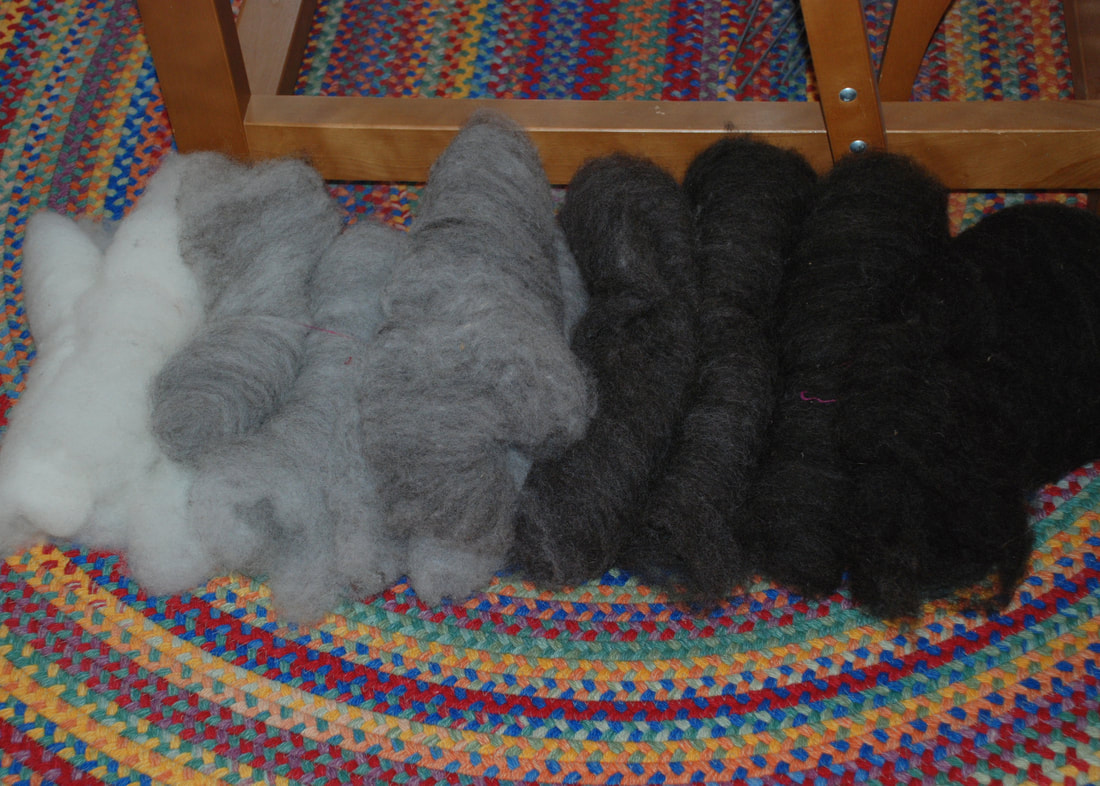
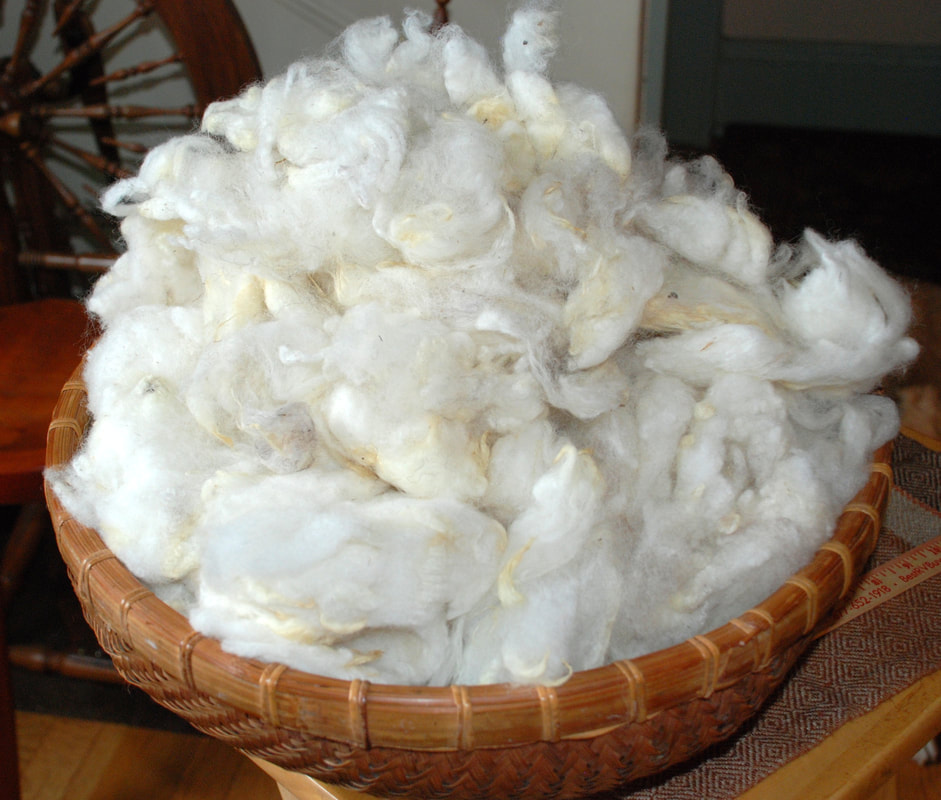
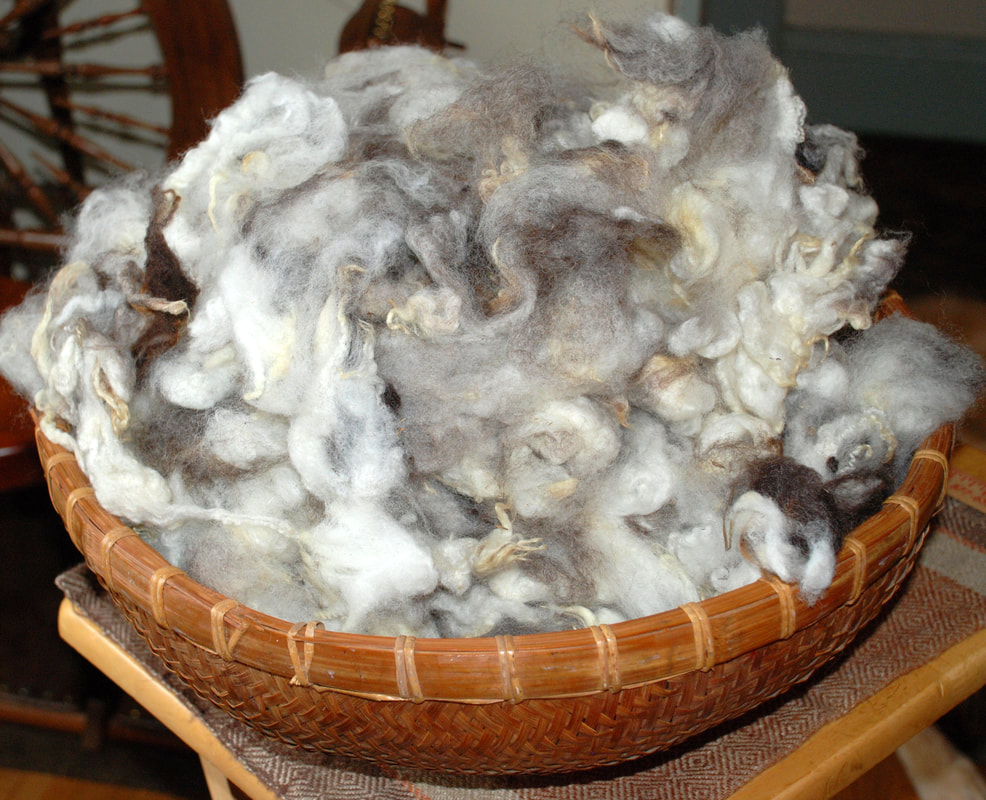
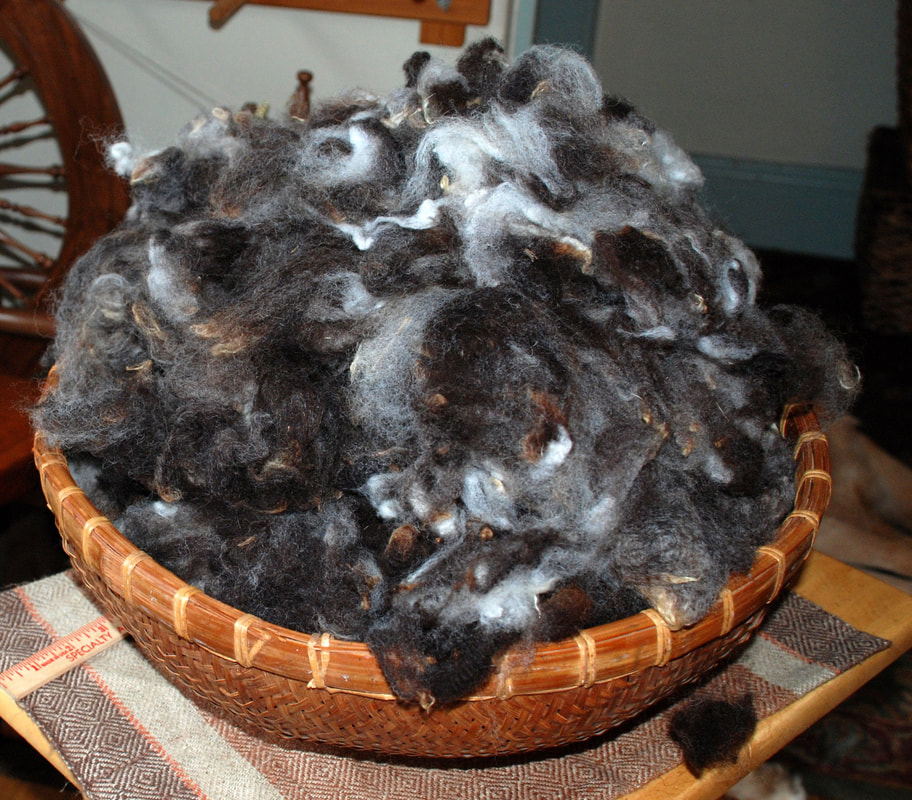
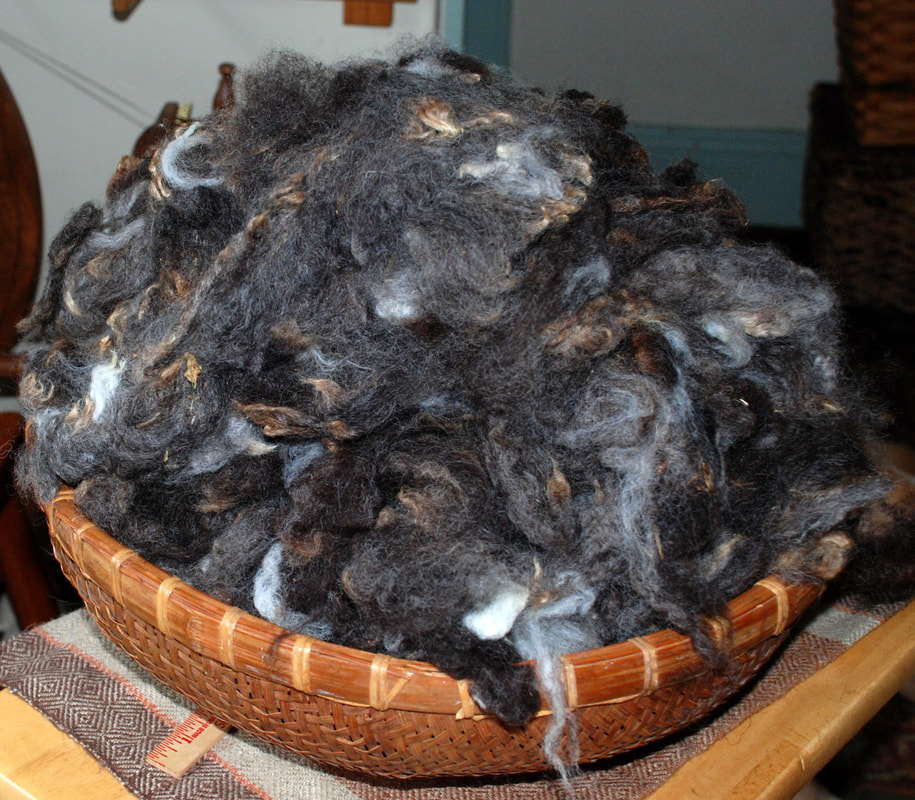
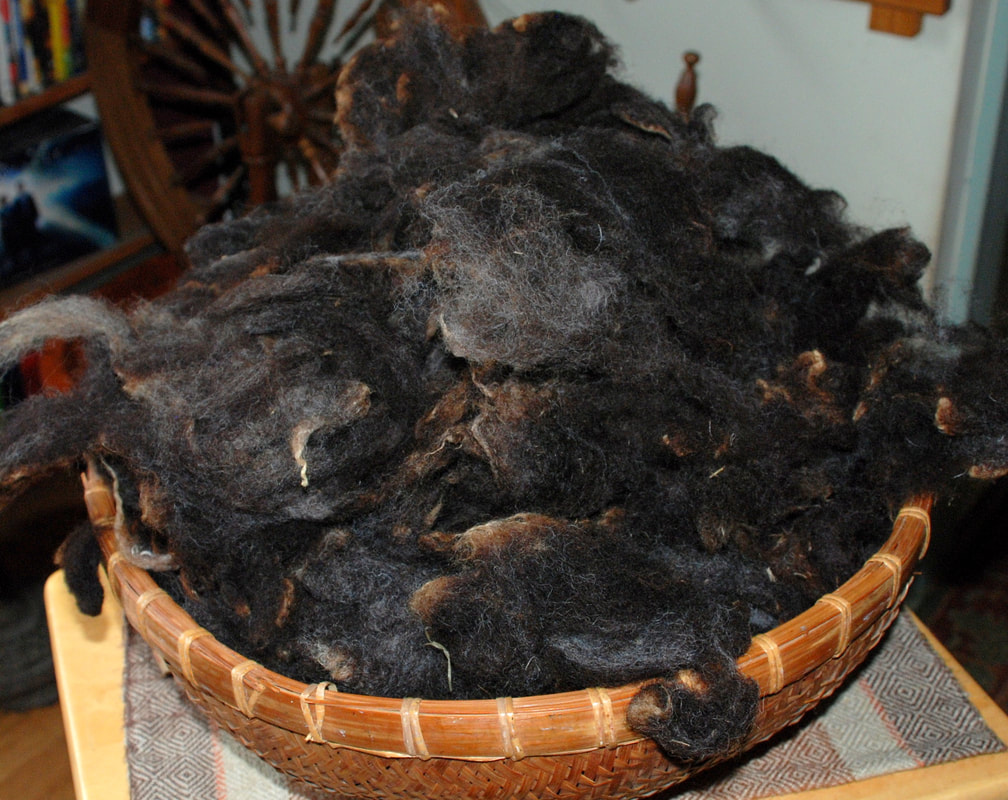
I do love to spin Jacob wool.
For me, it is one of those comfort activities. Jacob just makes me feel good. A fire in the wood stove, a cup of Hot Chocolate, and some Carded Jacob is my idea of a relaxing way to spend the day! The fiber is springy, not TOO kinky, and drafts easily. It is the kind of fleece that will please the beginner, all the way through to the seasoned veteran. The yarn you get will make super outerwear, socks, shawls, and a spectacular blanket (that’s my current plan!). The yarn also has SPROING — so it kinda snaps back — like boing!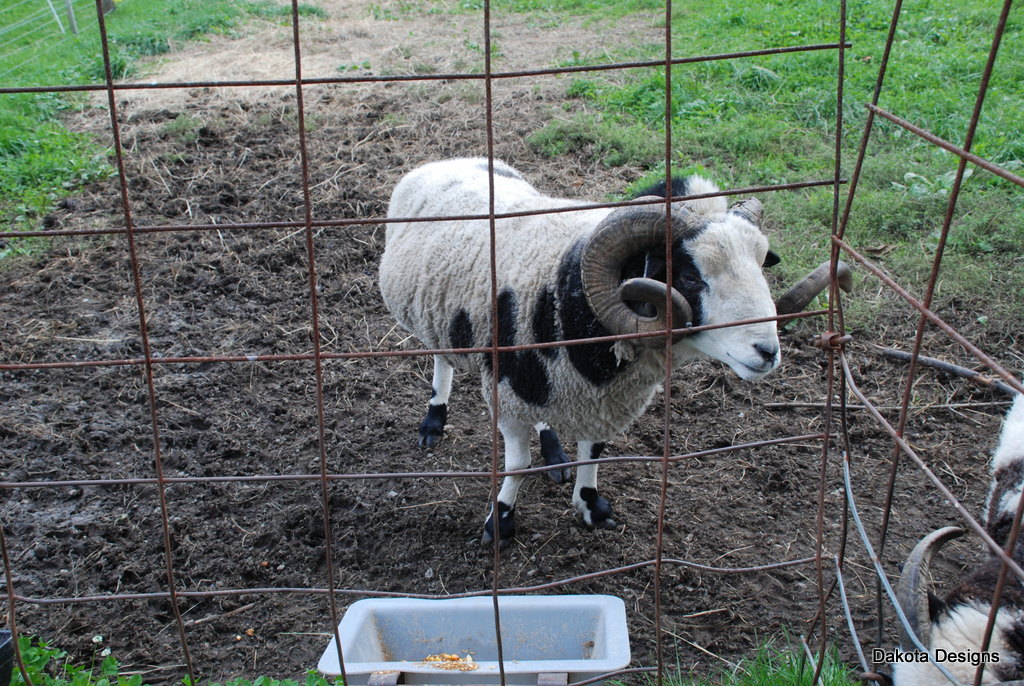
What makes a Jacob?
Some of you are wondering, What is Jacob? Jacob is a polycerate (love that word) sheep. That means they have MANY horns. American Jacob differs greatly from British Jacob, where the breed originated. American Jacob are smaller. Breeders don’t coat them — because of the many, REALLY curvy horns (the POLY from polycerate). Jacob has a greater range of acceptable fiber than any other breed. Since it is a conservation breed, there are many folks who have a small herd of Jacob. Because of this, you may find quite a few farms with Jacob that produce wonderful fleece!
Jacob sheep produce multicolored fleece, from white to nearly black. As you move through the spectrum of color, the fleece also gets shorter and softer from light to dark. Working with a Jacob fleece is a delight for the senses!
The Many Colors of Jacobs' Coat
 American Jacobs are smaller than their British cousins, so if you want MORE of all the colors, you can get several Jacob Fleeces, and sort them together. I once sorted through 5 Jacob Fleeces. I like to separate my Jacob into piles. I start by pulling out the pure white areas, and the pure dark area — these will be the two ends of my spectrum. Then I look at what is left, and start separating, based on lighter vs darker. I don’t pull away any of the bits of white clinging to the grey or the brown, but I might grade the pile as lighter gray and darker gray, depending on how much white I see mixed in. Often I have been able to get 5 shades of carded roving. But 4 is good too.
American Jacobs are smaller than their British cousins, so if you want MORE of all the colors, you can get several Jacob Fleeces, and sort them together. I once sorted through 5 Jacob Fleeces. I like to separate my Jacob into piles. I start by pulling out the pure white areas, and the pure dark area — these will be the two ends of my spectrum. Then I look at what is left, and start separating, based on lighter vs darker. I don’t pull away any of the bits of white clinging to the grey or the brown, but I might grade the pile as lighter gray and darker gray, depending on how much white I see mixed in. Often I have been able to get 5 shades of carded roving. But 4 is good too.
Sorting
Sort Raw or sort Clean? Well, it kinda depends! If the fleece is really dirty (dirt-type of dirty), then you should wash it first, You’ll have a hard time seeing the color valuations if it is all kinda coated with mud! The white on a Jacob is usually BRIGHT — so clean helps.
I have sorted both ways, raw and clean. Clean smells better, but the fiber holds more tightly together, and you have to do a little more pulling. The advantage is that you can do it in the house and you can see the colors. When washing first, try to get 2 – 3 basic color areas, and keep them together for later. Wash each as a single “batch” .
Sorting a Single Raw Jacob Fleece — 4 Shades
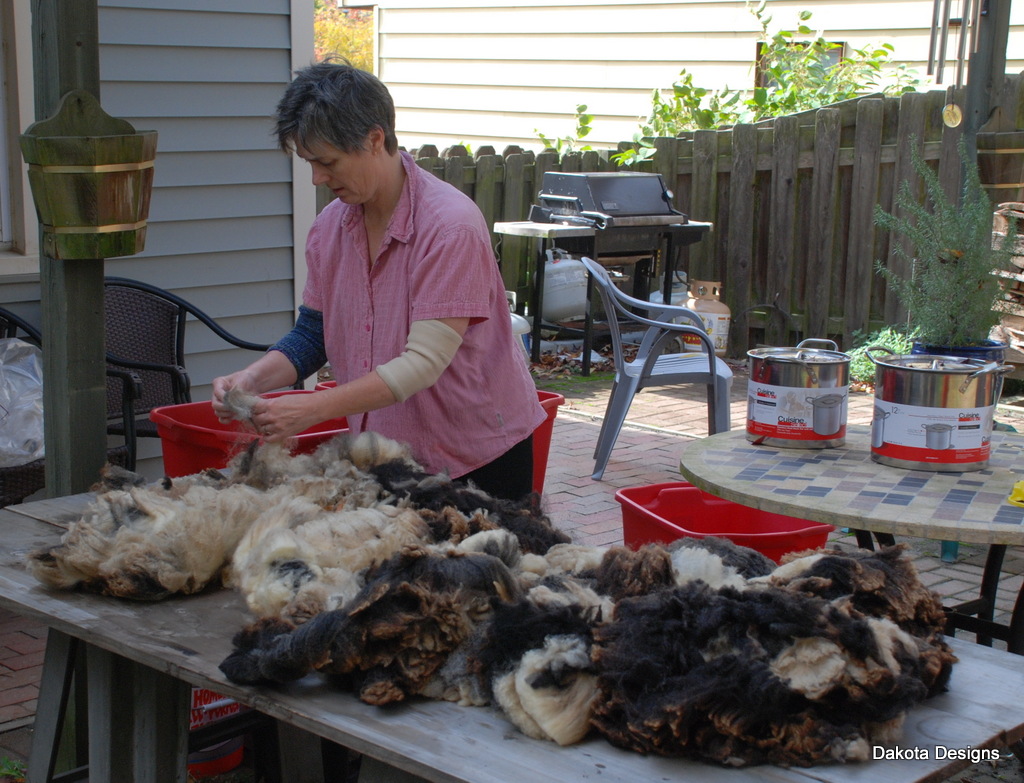
Sorting Multiple Washed Jacob Fleeces – 5 Shades

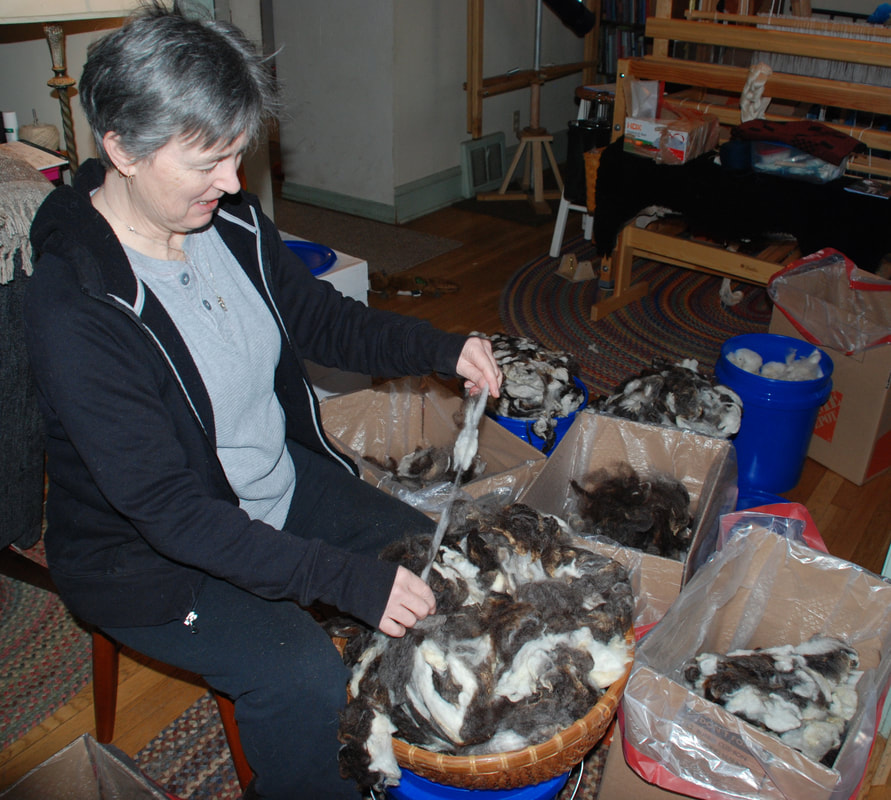
And then … there is the Gourmet Jacob — Lilac
Jacob sheep that are 60% white and 40% another color — light gray or light brown — are called “lilac". For these fleeces, you do not try to sort the colors, you just wash, card and spin. Your yarn will have a gentle, subtle Lilac hue.
So far I have found Lilac Fleece to be a little softer. I try to get Lilac fleece whenever I can! It is such an adventure in spinning, and a treat for the eyes. See the second picture below.
Try Jacob — You Won’t be Sorry
Jacob is a medium length fiber, and comes in multiple shades and multiple degrees of softness. It is fun and easy to spin. It cards up quite easily, whether you are using hand cards or a drum carder — I like the way it turns out with my Louet Jr. Drum carder. You can comb Jacob — but carding works just as well, and it spins great from a carded bat.
When you work with Jacob, you are working with a little piece of history, a sheep breed that has not been “improved” — it’s just JACOB!